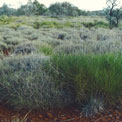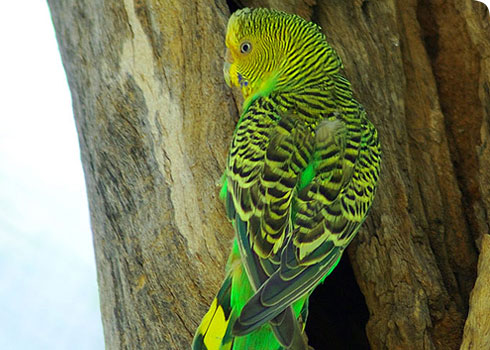Distribution

Spinifex (Triodia) grasses, Eucalyptus and Acacia trees, western Australia © Hesperian, GNU Free Documentation License
The budgerigar is native to the interior of Australia, with an estimated range of nearly 6 million square kilometres.
It does not generally occur along coastal regions, and is absent from the Cape York Peninsula.
Habitat
Budgerigars occur in a wide variety of open habitats, including:
- savanna
- farmland
- wooded grasslands
- open forests
- dry scrub
- plains
Although budgerigars are extremely tolerant of arid conditions, they are usually found near a water source.
Nutrition
Budgerigars feed primarily on a wide range of small grass seeds.
They may feed on the ground, searching for fallen seeds, and also climb tussocks to strip seed heads. They will sometimes attack cereal crops.
Seeds have a high calorific content, making them an ideal food, but must be de-husked before eating to aid digestion. The birds are well designed for the task - their small compressed beaks, with a hinged upper mandible and their chunky, flexible tongues, help them manoeuvre seeds with great precision.
Budgerigars are extremely water hardy, an essential adaptation to their arid environment. If a water source is not available, budgerigars can survive by lapping up early morning dew and may bathe by rolling in damp grass.
Waterholes are approached with caution, usually in flocks, with birds settling on trees nearby before flying down in groups to drink or bathe for a few seconds.
